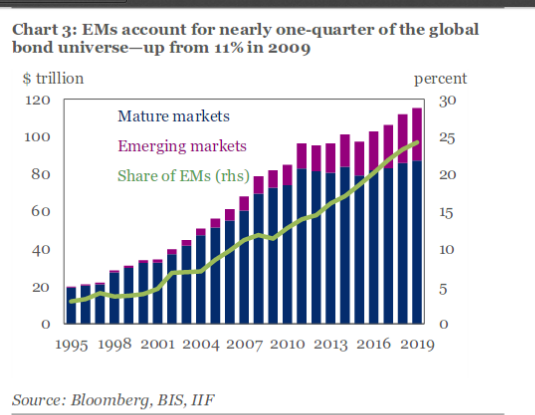Egypt’s government debt to GDP ratio declined to 88.4% in the second quarter (2Q) of 2019, down from 97.3% in 2Q 2018, the Institute of International Finance (IIF) said in its latest report.
Meanwhile, the state’s household debt to GDP remained unchanged at 7.1% in the 2Q of 2019, compared to the same period last year.
Egypt’s financial sector’s debt of the GDP slightly decreased to 5.4% during the 2Q of 2019, down from 5.5% in the 2Q of 2018.
On the other hand, the country’s non-financial corporate debt to the GDP also decreased to 22.9% of GDP in 2Q of 2019, compared to 25.9% during the 2Q of the previous year.
Notably, the government debt to the GDP in Egypt averaged 87.91% from 2002 until 2018, reaching an all-time high of 102.30% in 2003 and a record low of 73.30% in 2009, according to trading economics.
The Ministry of Finance is targeting a debt-to-GDP ratio of 82% during the current Fiscal Year (FY), seeking a debt-to-GDP ratio of 80% during the next FY, according to the ministry’s preliminary financial statement.
Regarding the global debt, the IIF`s report revealed that the global debt increased to $250.9 trn in the 2Q of 2019, up from $243.6 trn in the 2Q of 2018.
The IIF`s report showed that the global debt is projected to hit $255 trn by year’s end, spurred by looser financial conditions.
It further showed that the global debt load increased by $7.5 trn in the first half (H1) of 2019, and now hovers around a new record of over $250 trn (320% of GDP).
“China and the U.S. accounted for over 60% of the increase,” the report revealed.
Concerning emerging markets (EM), the total debt of the emerging markets recorded $71.4 trn during the 2Q of 2019, hitting a new record of 220% of GDP, compared to $66.8 trn in the same period last year.
Among emerging markets, the report declared that, Chile, South Korea, and Argentina have seen the greatest increases in debt year-over-year.
The emerging markets non-financial debt reached $31trn in the 2Q of 2019, compared to $29.5 trn in 2Q of 2018.
“State-owned enterprise (SOE) now account for over half of the emerging markets non-financial corporate debt,” according to the IIF.
The EMs households debt reached $12.9 trn in the 2Q of 2019, compared to $11.7 trn in Q2 2018, while government debt reached $16.3 trn during the 2Q of 2019, compared to $14.9 trn in the 2Q of 2018.
The EM financial debt reached $11.2 trn during the 2Q of 2019, compared to $10.7 trn.
“$9.4 trn in EM bonds/syndicated loans will come due through end of 2021,” according to the report.
Meanwhile, the total debt of the mature markets reached $179.5 trn during the 2Q of 2019, compared to $176.8 trn in the same period last year.




